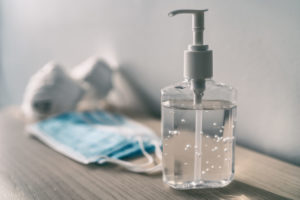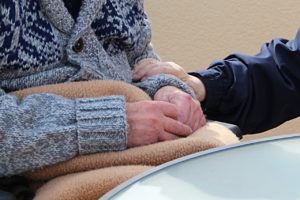Key Resources from the CMS Toolkit on State Actions to Mitigate COVID-19 Prevalence in Nursing Homes
 To help nursing homes, states, and senior care facilities better mitigate the COVID-19 pandemic, the Centers for Medicare & Medicaid Services have released a valuable resource: the Toolkit on State Actions to Mitigate COVID-19 Prevalence in Nursing Homes.
To help nursing homes, states, and senior care facilities better mitigate the COVID-19 pandemic, the Centers for Medicare & Medicaid Services have released a valuable resource: the Toolkit on State Actions to Mitigate COVID-19 Prevalence in Nursing Homes.
The June 2020 version of this guide is 134 pages long. Here, we highlight some of the most versatile resources that senior care facilities can learn from and adopt.
Staffing
Nursing homes, communities, and states have utilized a variety of creative solutions to meet their staffing needs:
- The County of Santa Clara Emergency Operations Center in California established a survey for residents interested in volunteering. The survey identified residents’ skills and helped to match them with nursing home needs, like social work services.
- The University of Missouri Sinclair School of Nursing’s Quality Improvement Program for Missouri identified staffing best practices based on information learned from participating nursing homes:
- Alternate staff teams that work 5-7 days on, then 507 days off
- Staff teams in 12-hour shifts for consistency for patients and so that staff can get real rest time
- Staff COVID-19-specific teams in 12-hour rotations
- Cross-train staff in the COVID-19 unit to minimize the number of staff within the unit
- Create a place for staff to change and keep their street clothes, and possibly to shower, to reduce the spread of COVID-19
- The state of North Carolina created an online registration form for medical providers who wanted to pick up extra shifts, including long-term care facilities, then matched applications with health care facility staffing requests.
Communications
- The Delaware Health Care Facilities Association put large signs with room numbers in long-term care facility windows to help families easily identify where their loved ones were located.
- CHI St. Alexius Health in Garrison, ND clearly identifies the required contact time for cleaning and disinfectant products in large numbers on each bottle. This is an effort to draw attention to proper and effective use.
PPE
- Pioneer Health Group in Arizona visited hardware stores to purchase supplies of PPE including eye protection, face shields, shoe covers, masks, and gowns.
- “Help for Healthcare Delaware” volunteers made 20,000 masks for non-clinical staff.
- The Maine Health Care Association partnered with a small group of corporate leaders for “Think Tank Friday” meetings. Members shared vetted vendors with the goal of procuring PPE for facilities.
Resources
- The Coalition for Compassionate Care of California has developed a COVID-19 Conversations Toolbox. This includes decision aids, scripts, conversation tips, and tools that help patients, families, and providers to navigate end-of-life decision making during the pandemic.
- The National Nursing Home Social Work Network of the University of Iowa holds weekly online support group meetings. The meetings and online resources provide guidance on topics like ethical decision-making, advance care planning, and how to support residents, staff, and families.
- The Maine Health Care Association encouraged community members of all ages to write e-notes and/or upload photos of drawings/artwork or videos to send to nursing home and assisted living facility residents.
- Dr. William Mansbach of FutureCare Nursing Homes developed five videos for employees. These videos cover topics like diet and hydration, information overload, breathing, and physical and cognitive exercise.
- LeadingAge in New Jersey is compiling suggestions for resident engagement activities during social isolation. Members recommend activities that they have successfully used in senior care settings.
- The New York State Office of Mental Health published a resource about how to manage anxiety in an anxiety-provoking situation. This resource includes tips for caregivers of older adults.
- New York University’s On the Frontline initiative includes valuable information on multiple elements of the pandemic, including how to combat racially driven bias, how to fight fake news, and how to manage stress.
- Canterbury Rehab published guidance on what it learned from navigating a COVID-19 outbreak. The guidance includes information on cohorting, testing, PPE, and more.
- The National Rural Health Association has published a toolkit specifically for rural providers.
- The Centers for Disease Control and Prevention has published a guide on how workers and employees can manage workplace fatigue during the pandemic.
- The Ohio Department of Health has published a checklist on how consumers and facilities can avoid COVID-19 scams, including price gouging, fake robocalls, and other scams.
- The Academy of Senior Health Sciences has published a variety of resources on caring for nursing home residents.
Additional Learnings
Do take time to review this toolkit yourself, since there are many state-specific resources that aren’t highlighted here. The toolkit also includes a comprehensive list of organizations available to assist nursing homes, sorted by state.
The highlighted resources and best practices are creative, innovative, and effective. You may be able to incorporate some of them into your senior care facility for increased safety and efficiency.

Paige Cerulli is a contributing writer to i Advance Senior Care.
Related Articles
Topics: Activities , Administration , Departments , Disaster Preparedness , Executive Leadership , Facility management , Featured Articles , Leadership , Operations , Policy , Regulatory Compliance , Risk Management








